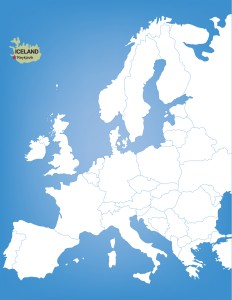In the ebb and flow of European anti-Muslim prejudice, the New Year followed a depressing pattern after attempted mosque arsons in Sweden and Bulgaria.
On January 6, the windows of the historic Dzhumaya mosque in Sofia were doused in petrol and a lit match started the fire, thankfully a quick-thinking security guard put out the flames before any sizeable damage occurred.
Sometime later, and a breakthrough was made, police arrested a suspect at a petrol station as the individual allegedly stole petrol ahead of a repeated arson attempt at the mosque. Last year, the mosque had some windows smashed during an anti-Muslim march.
In a country of just over 7.3 million, Bulgaria’s Muslim population is just 10 per cent. But prejudice against Muslims can easily manifest when cultural anxieties are exploited by those seeking to sow the seeds of division.
In Sweden, a spate of mosque attacks re-awoke many to the latency of a bigotry potentially gaining a foothold in the country, as the far-right rise, and the mainstream debate around the role of immigration polarises and heightens cultural anxieties.
On New Year’s Day, in Uppsala, eastern Sweden, a petrol bomb hit a mosque but did not cause a larger fire. Graffiti appeared on the main doors of the mosque, which read “Go home Muslim shit”. Days earlier, a suspected arson took place after a mosque in the southern town of Eslöv caught fire.
Both incidents recorded no injuries to worshippers. Yet on Christmas Day, an arson attack on a mosque in Eskilstuna, injured five worshippers, who went to hospital suffering from lacerations and smoke inhalation.
On that same day, another mosque in Europe was targeted by anti-Muslim bigots. A pig’s head was found nailed to the door of a Vienna mosque.
The ‘love-bombing’ of Uppsala mosque warmed the hearts of Muslims globally and various anti-racism protests reflected a wider disgust. But as anxieties fester and grow and no thought is given to the environment that allows such attacks to exist. Acts of solidarity are welcome but must exist beyond spectacle, no matter how welcome and heart-warming there are.
For many Muslim women in Sweden, the photo-sharing platform Instagram is a popular tool for individuals to share their experiences of anti-Muslim abuse.
As the shadow of Pegida haunts the east of Germany, a half-built mosque in the town of Dormagen was vandalised with racist profanities and swastikas on December 21.
On January 9, a senior member of the far-right Sweden Democrats Björn Söder was reported to police after writing on Facebook “The religion of peace shows its face” shortly after the Charlie Hebdo massacre.
In Vienna, the Tuna Mosque and Islamic Centre was vandalised with anti-Islamic graffiti that read “Paris! Islam = shit out”. A clear reference to the above massacre.
So what can we discern from these recent spates of attacks? For Fiyaz Mughal, the Director of TELL MAMA, the answer is clear:
“Social media has been used effectively by extremist far right groups and by those looking to target and promote anti-Muslim hatred. Furthermore, narratives of anti-Muslim hate can travel instantaneously in today’s world and are virtually the same in Burma through to the US, without regional and geographical variances, meaning that global narratives are being pushed and picked up through social media.
It must also be stated that terrorism, such as the killings of satirists in Charlie Hebdo and individuals like the Muslim policeman Ahmed Merabet, also greatly stoke anti-Muslim resentment. Terrorism has been one major driver of that though extremist anti-Muslim groups use these terrible events to try to promote their anti-Muslim, totalitarian and autocratic political aims. In many ways, the political aim of reducing and destroying democracy whilst blaming whole communities, mirrors the followers of groups like Al Qaeda and ISIS.“
Note: TELL MAMA has also previously circulated an infographic on anti-Muslim incidents that have taken place in France after the Charlie Hebdo murders.





